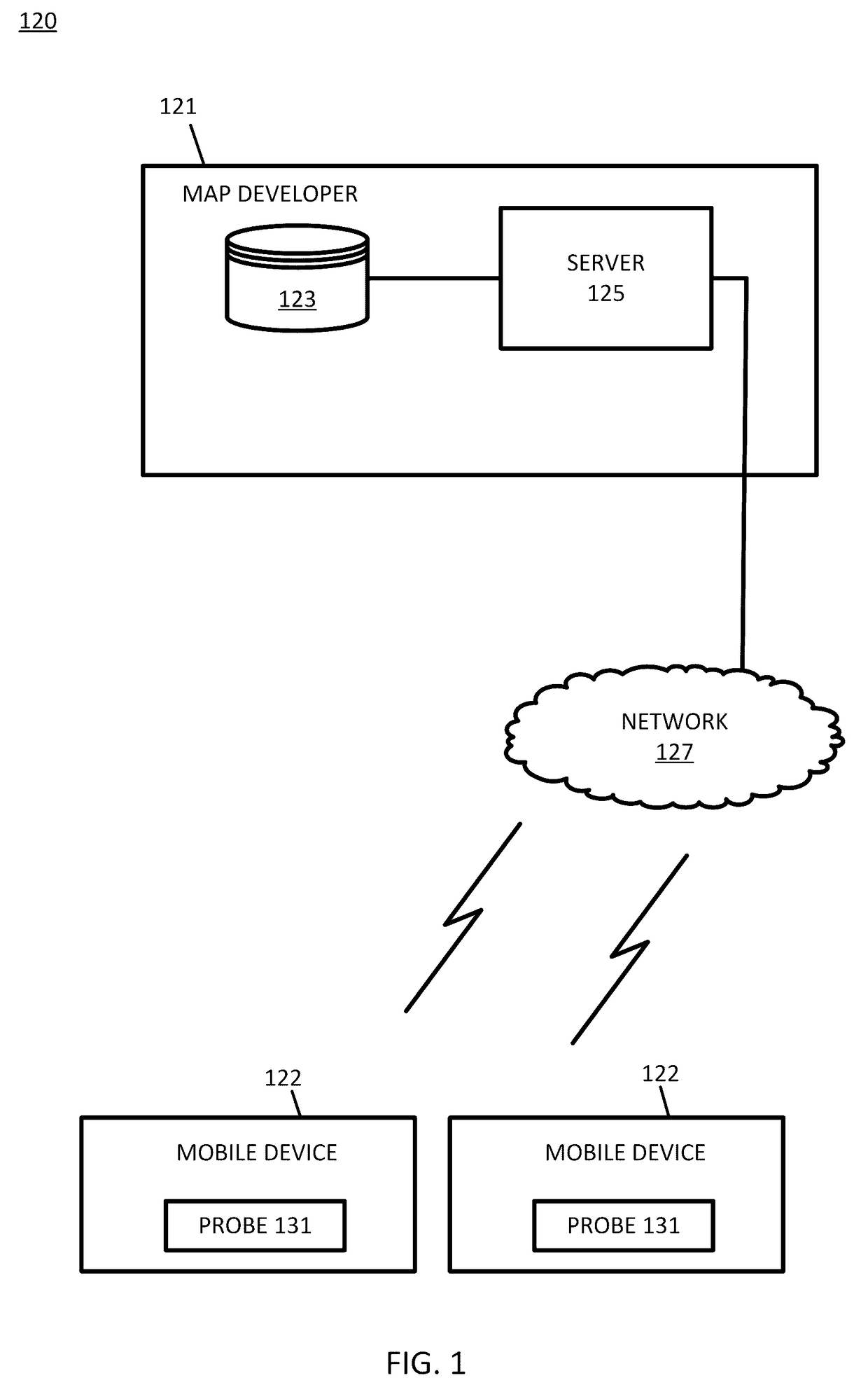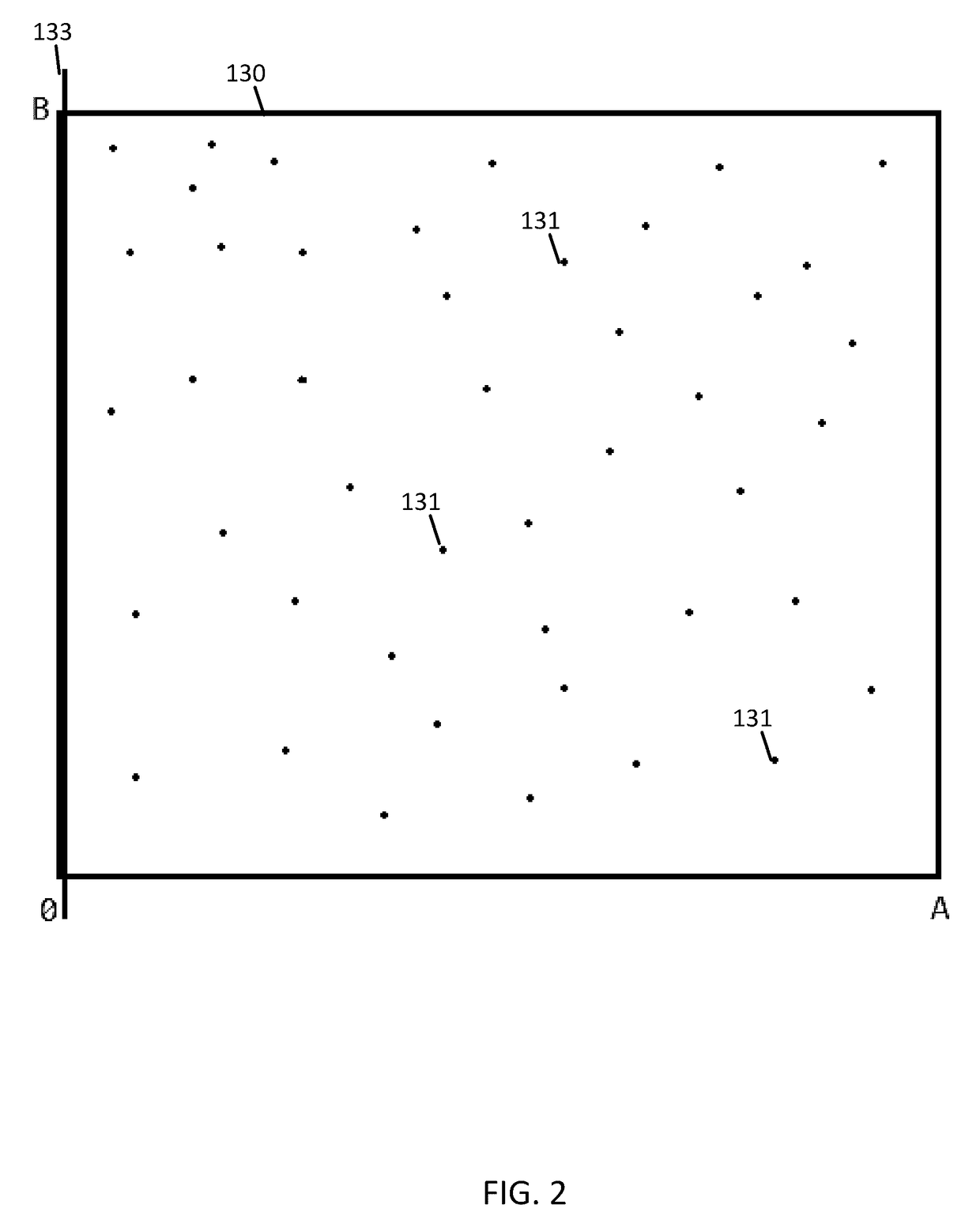Road Density Calculation
a technology of road density and calculation method, applied in surveying, navigation, instruments, etc., can solve problems such as errors and ambiguities in techniques, inaccurate positioning data, and inability to match maps in all directions
- Summary
- Abstract
- Description
- Claims
- Application Information
AI Technical Summary
Benefits of technology
Problems solved by technology
Method used
Image
Examples
example classification
[0032 systems that may be assigned numeric values for functional class. The functional class of the road segment may be described as a numerical value (e.g., 1, 2, 3, 4, and 5) represented in the feature vector. Functional class 1 may be highways while functional class 5 may be small streets. Table 1 further illustrates schemes having three to six functional classes.
[0033]One example of a simple system includes the functional classification maintained by the United States Federal Highway administration. The simple system includes arterial roads, collector roads, and local roads. The functional classifications of roads balance between accessibility and speed. An arterial road has low accessibility but is the fastest mode of travel between two points. Arterial roads are typically used for long distance travel. Collector roads connect arterial roads to local roads. Collector roads are more accessible and slower than arterial roads. Local roads are accessible to individual homes and bus...
PUM
 Login to View More
Login to View More Abstract
Description
Claims
Application Information
 Login to View More
Login to View More - R&D
- Intellectual Property
- Life Sciences
- Materials
- Tech Scout
- Unparalleled Data Quality
- Higher Quality Content
- 60% Fewer Hallucinations
Browse by: Latest US Patents, China's latest patents, Technical Efficacy Thesaurus, Application Domain, Technology Topic, Popular Technical Reports.
© 2025 PatSnap. All rights reserved.Legal|Privacy policy|Modern Slavery Act Transparency Statement|Sitemap|About US| Contact US: help@patsnap.com



